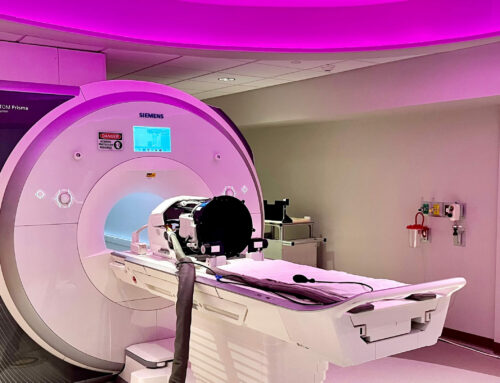By Dr. Evan L. Lipkis, MD, Internal Medicine Specialist at Glenview IL, author and radio personality, and a physician ambassador for the Global Telehealth Exchange by Solve.Care
In the fight to suppress Covid-19, each person’s health status depends on another’s. Not for the first time, the widespread inequalities and inefficiencies in our global health systems have been laid bare. Now, following 18 months of high dependency on public healthcare systems, as the fog of the Covid-19 pandemic begins to lift, access to affordable healthcare remains high on the political agenda. Yet not much has changed. Healthcare systems are still multi-party, complex, expensive, and, in many cases, inaccessible.
For patients, healthcare systems can seem inaccessible, and for doctors, the feeling can often be mutual. The lack of synergy between all stakeholders in the healthcare system creates a multitude of barriers, from rising costs, reduced resources, and a lack of trust. Due to increased fraud within healthcare systems, along with general data protection practices, doctors are spending more time on administrative work than ever before. A recent study shows that the average doctor in the US spends over 16% of their time on administrative tasks, which translates into almost nine working hours per week. The administrative duties that are placed under a doctor’s responsibility are growing year by year, rapidly decreasing the efficiency of the system. Today, a doctor’s administrative duties include collaborating with physicians from different healthcare facilities, developing treatment plans for patients, and liaising with different insurance companies on behalf of patients. The doctor’s time and patient’s money are poorly allocated within the system, driving further inefficiencies, and directly impacting the level of care a doctor can provide. With the onus to provide accessible healthcare shifting from governments, to employers, to insurance companies, it is now time to seek change from outside of the public system.
Unsurprisingly, the single greatest barrier to healthcare is a lack of financial means. This is compounded by other significant barriers such as a knowledge deficit, geographical location, archaic administrative processes, and protracted waiting times rampant across public health services. These inefficiencies in healthcare systems are cyclical, leading to increased costs, additional administrative tasks, and increased illnesses because of long waiting times or avoidance of healthcare systems.
So how do we change this? The rise of decentralized finance and digital currencies holds the potential to transform the healthcare industry as we know it. Healthcare is on the cusp of a digital transformation. A recent study published in JAMA Network Open found that the use of telehealth services increased from 0.3% in 2019 to 23.6% in 2020. This study also found that greater social resources were associated with higher telehealth use. This highlights the potential that a digital health model must create a monumental shift in healthcare provision and the willingness of patients to adapt. Digital innovation in healthcare provides patients with a wider range of choices and better access to care, particularly in rural communities, while also improving how doctors practice, and patients interact, with medicine. The changes implemented over the last year have demonstrated that the healthcare industry has the propensity to undergo positive transformation when presented with a crisis, and this should drive the industry to enact the change that is now so desperately required.
Introducing a digital currency could help tackle some of the greatest challenges facing the global healthcare system today. From consultation to payment of services and prescriptions, the industry is ripe for change. Healthcare systems are built on information transactions. Blockchain is a distributed ledger technology that holds the power to establish engagement between stakeholders that is transparent in terms of the rules of the relationship, but secure in terms of the content of the relationship. Such engagement includes payment transactions from one stakeholder to another. The introduction of a digital currency allows for rapid, or even instantaneous transactions between parties, eliminating delays in payments experienced because of consulting traditional insurance companies and using mainstream banking facilities.
Decentralized finance has the potential to facilitate lower interest loans, increase capital flows, and provide instant access to funds, which will reduce the cost of healthcare in general. By tokenizing healthcare, we can facilitate instant and secure transactions within the system, reducing the need for intermediaries, increasing efficiency in care and service, and reducing costs. To reach maximum efficiency, patients, doctors, and insurance companies must operate on universally accessible payment systems. DeFi solves this as it can be accessed by any person in any geography in any part of the world. Decentralization and tokenization can reduce the barriers to accessing healthcare by increasing transparency in care delivery and payment processes. By eliminating many time-consuming processes, the implementation of blockchain technology will provide each party with the capacity to carry out the main functions of their role, driving maximum efficiency within the system, and dramatically reducing the barriers in access to affordable healthcare.
Healthcare systems require extensive collaboration between all stakeholders from healthcare providers, patients, administrative staff, insurance companies, and payment processors. The widespread adoption of emerging technology has the potential to increase efficiency in healthcare provision and break down existing barriers that block access to affordable healthcare. Such change has the potential to increase levels of trust and improve the standard of care. If the healthcare industry does not adopt the technological innovation at its fingertips, there is no doubt that the provision of healthcare globally will continue to decline. The answer no longer lies in healthcare benefits from employers, or state policy, or provision, but in the utilization of advanced technologies and the increased autonomy it can offer to all stakeholders within the system.
 About the Author
About the Author
Dr. Lipkis is THE RATIONAL PHYSICIAN. He combines standard medicine with complementary medicine to write health books and cherry pick the best supplements for all of us. He has over 35 years in the medical field. Dr. Lipkis trained at Northwestern University Medical School and presently practices at Glenbrook Hospital in Glenview, Illinois. He is a physician ambassador for the Global Telehealth Exchange by Solve.Care.
He writes ‘Doctor In Your House,’ an award winning medical e-newsletter that gives you practical nuggets of concise medical info that you can use today. Dr. Lipkis is also an editor for Prescriber’s Letter, an international newsletter for physicians.
He has served as president of the local chapter of the American Cancer Society, hosted Medical Insight on WTMX radio, and lectured nationally with Dr. C. Everett Koop, the former surgeon general. He has served as a medical consultant for WGN radio.
Dr. Lipkis is one of the top 50 doctors in the Midwest, according to www.checkbook.org, a Consumer Report’s endorsed organization. He is also a top doctor according to Leading Physicians in the World 20












